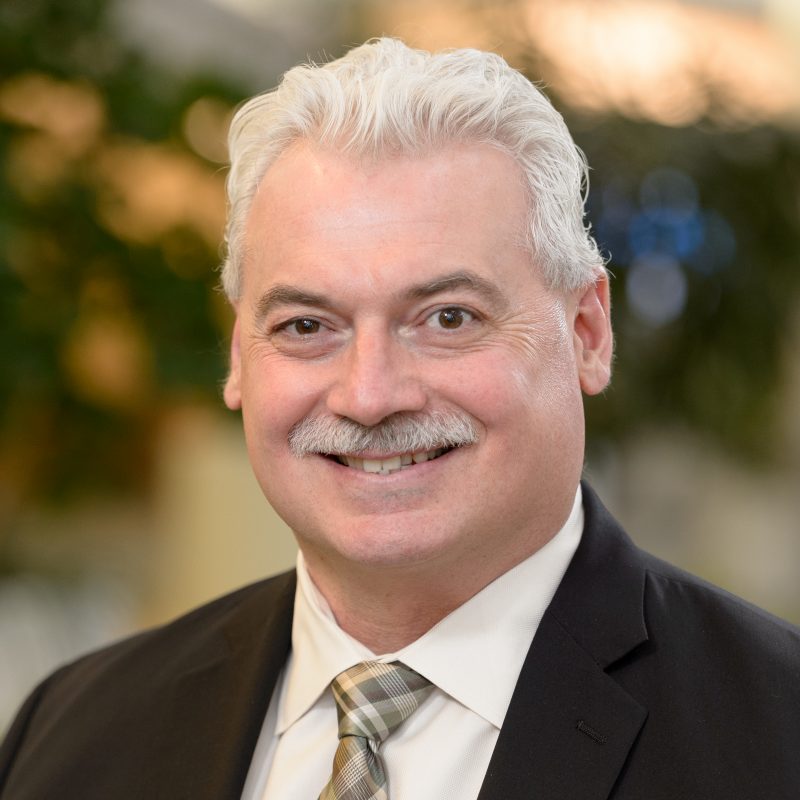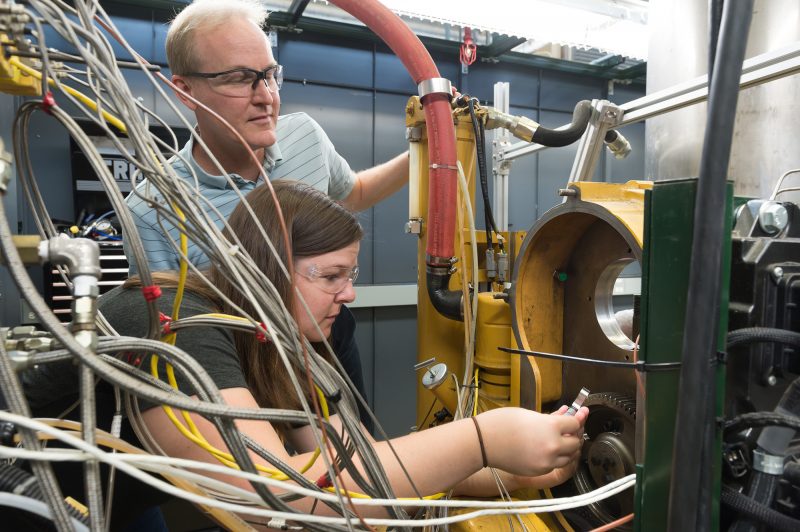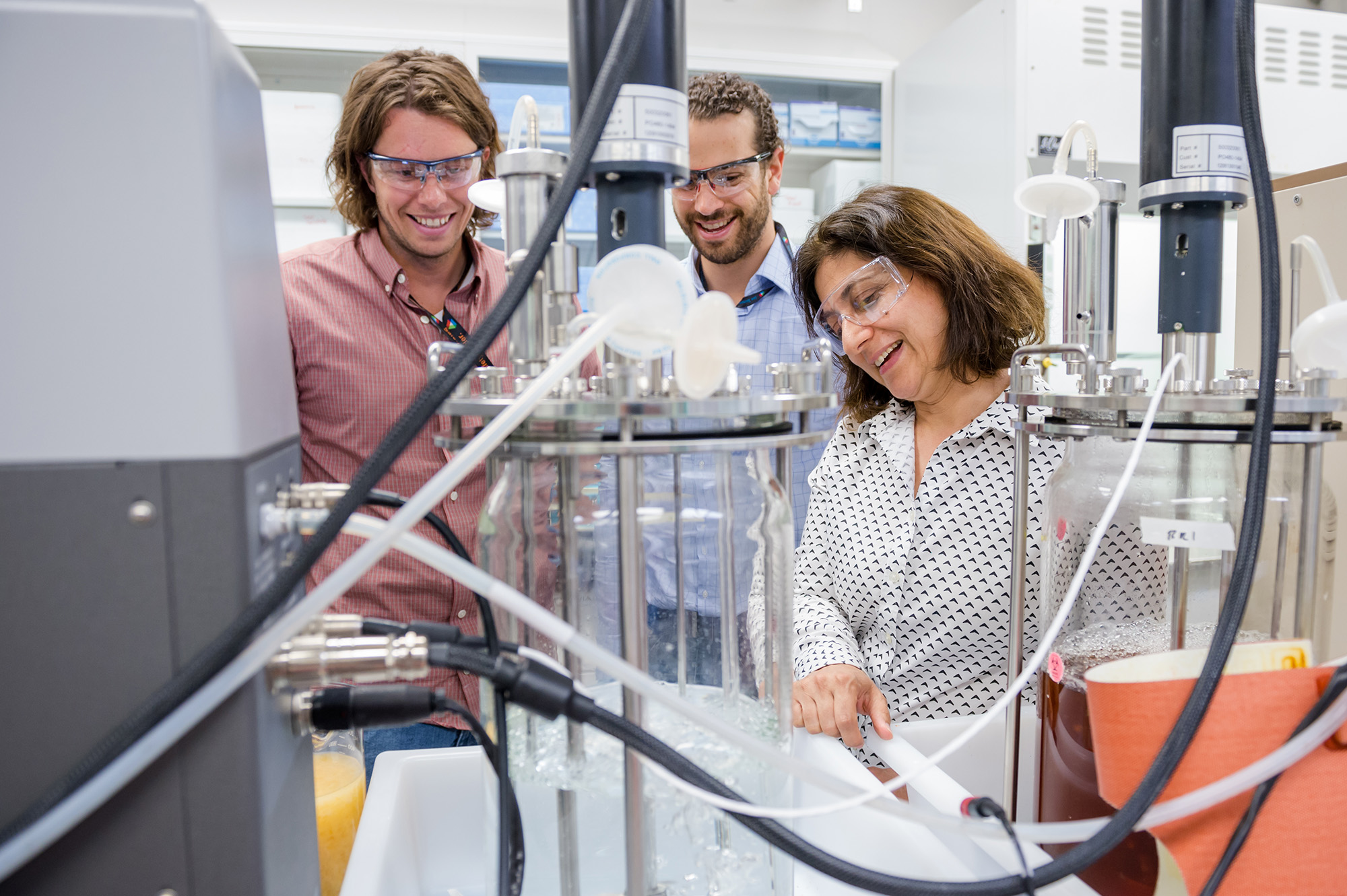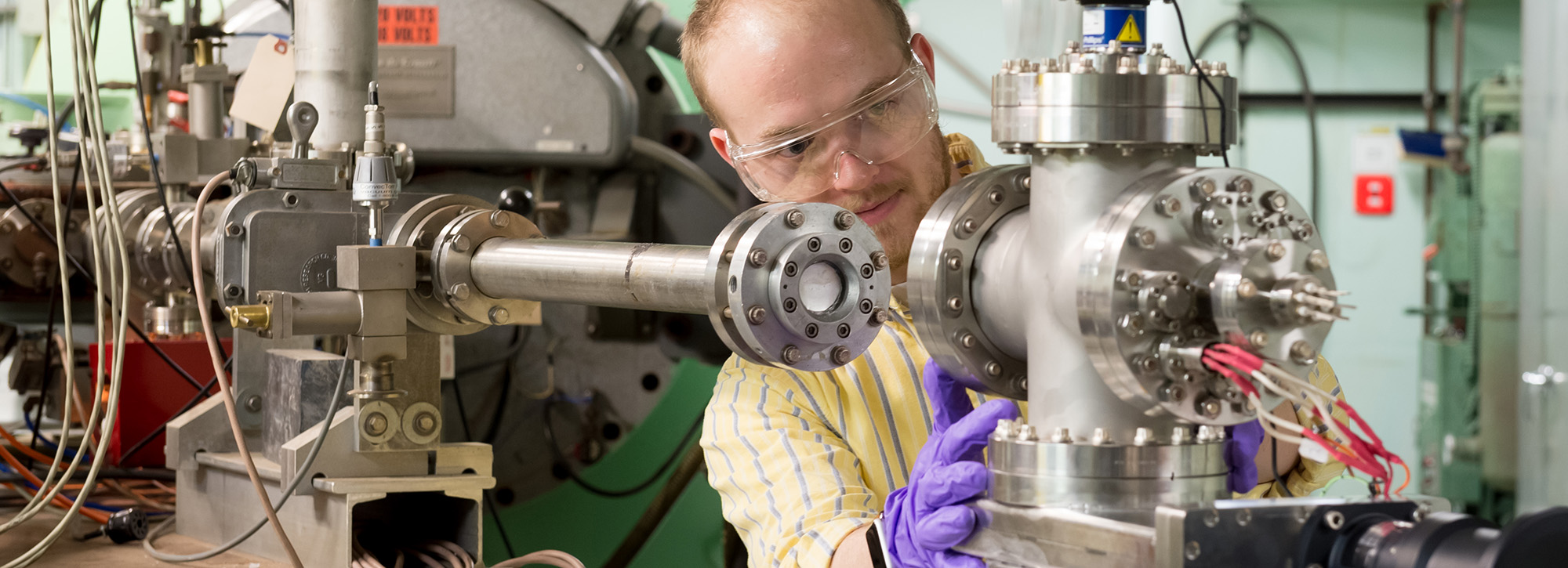Blog | Federal Investment
March 6, 2025
May 1, 2018 │ Q&A with John Carlisle, Director, Chain Reaction Innovations at Argonne National Laboratory; Bernard Johnson, Co-founder and CEO, ClearFlame; Ian Hamilton, Founder and CEO, Atlas Energy Systems, LLC; and Justin Whiteley; Chief technology officer and co-founder, Emergy
By the mid-21st century, the world will use twice as much energy as it does today, and the countries that have a reliable and affordable clean energy supply will be the strongest and most secure. In order for the United States to keep its advantage economically and maintain our current global standing, we need to continue to drive innovation in clean energy.
Small businesses across the U.S. are helping the country meet that challenge and leading energy innovation today. However, small businesses often need support to bringing the next big idea in energy innovation to reality. That’s where public-private partnerships come into play. Public-private partnerships are an essential tool for helping small businesses bridge the gap between scientists in the lab and entrepreneurs in the marketplace, ensuring that the U.S. stays competitive and leads in the clean energy sector.

John Carlisle directs Chain Reaction Innovations (CRI), a program at the U.S. Argonne National Laboratory for innovators and small business entrepreneurs focused on energy and science technologies. Argonne National Laboratory is a world-renowned, multidisciplinary science and engineering research center where talented scientists and engineers work together to answer the biggest questions facing humanity, from how to obtain affordable clean energy to protecting humans and the environment from environmental stressors. The lab was born out of the University of Chicago’s work on the Manhattan Project in the 1940s and is led by the U.S. Department of Energy. Argonne partners with universities, industry, and other national labs on questions and experiments too large for any one institution to do by itself. It is constantly searching for new ways to develop energy innovations through science.
Within Argonne’s broad mission, the goal of Chain Reaction Innovations (CRI) is to give the nation’s brightest energy and science innovators, including those from small businesses, the best chance at success. Participants receive a fellowship that not only gives them the business strategies and infrastructure to develop and scale their technologies, but also access to laboratory equipment and financial and technical support and access to the world-class Argonne National Laboratory.
John sat down with three program participants—up-and-coming energy entrepreneurs from CRI’s first cohort—to discuss what their small businesses are doing to help blaze a trail for the energy innovation sector.
#
John Carlisle, Director of Chain Reaction Innovations at Argonne National Laboratory: Tell us about your company. How do you set yourself apart in the energy innovation sector, regionally and nationally? What are some examples of your work?

Bernard Johnson, Co-founder and CEO, ClearFlame: ClearFlame is focused on modifying diesel engines to use alternative fuels, which reduces engine emissions and operator fuel costs without loss of performance. Diesel engines are used in a wide range of applications, including trucks, cars, and even onsite power generation at military bases and other critical facilities. Our technology provides a cleaner and lower-cost solution for diesel engines in heavy-duty applications—which include many sectors where alternative technologies like electric vehicles are poorly suited. The ClearFlame engine can utilize domestically-abundant fuels like ethanol and natural gas, promoting homegrown energy resources and reducing the need for foreign oil. This is especially true in the Midwest, where ethanol usage not only reduces greenhouse gas emissions, but also helps increase revenues for the agriculture sector. One day, as you’re driving along the highway, you’ll find cleaner and more efficient trucks thanks to our technology.

Justin Whiteley, Chief technology officer and co-founder, Emergy: Emergy has developed a versatile bio-manufacturing process to make low cost advanced porous carbon materials for energy storage and filtration applications. Emergy’s platform technology uses heat to convert fungus into materials for a wide range of applications, including purifying industrial wastewater into a renewable energy feedstock. Just think of it—we’re taking dirty water from manufacturing plants and making it into clean energy. Emergy can produce low cost, high surface area, pure carbon electrodes for supercapacitors (which are used in energy storage) from the treatment of brewery wastewater. So the next time you kick back with some friends over a beer, maybe you’ll be contributing to the creation of the next generation of energy storage materials!

Ian Hamilton, founder and CEO, Atlas Energy Systems, LLC: Atlas Energy Systems, LLC is developing technology that makes safe, secure, and portable nuclear power supplies for space, military, and remote commercial applications. We aim to use bioproducts from spent nuclear fuel and other isotope industries that will generate plasma through their radiation. We then turn this plasma into electricity with our technology. What sets our technology apart is that we can create energy-dense and uninterrupted power for years without refueling. This means power lasts longer, for whatever mission it might be used for, and can be applied in hard-to-reach or remote locations. Our technology is not constrained by its surrounding environment; it can be operated from the depths of the ocean to beyond the stars.
#
John Carlisle (Argonne): Bernard, what impact does ClearFlame’s work have on the way we approach energy?
Bernard Johnson, ClearFlame: Anyone who has driven down a highway has seen (or smelled!) trucks belching out clouds of exhaust. Imagine these very same trucks driving along with similar engine technology—minus the dirty exhaust. ClearFlame’s unique approach decouples the performance and simplicity of today’s diesel engine design from the need for dirty, petroleum-dependent diesel fuel. This is critical for allowing the “diesel-style” engine to continue fulfilling its vital functions—moving 70% of the world’s goods, and constituting 35% of distributed/backup power generation capacity. Currently, many companies are focusing on developing battery-powered alternatives, which require a much larger change to user behavior and infrastructure. Such solutions will be an important part of the future energy ecosystem, but by maintaining the benefits of the internal combustion engine, ClearFlame is able to simplify diesel displacement, and accelerate the pace at which the world can eliminate the detrimental economic and environmental effects of diesel fuel.
John Carlisle (Argonne): Justin, what role have public programs and investments through the Department of Energy played in the development of Emergy?
Justin Whiteley, Emergy: Chain Reaction Innovations (CRI) is a lab-embedded entrepreneurial program through the U.S. Department of Energy’s Energy Efficiency and Renewable Energy program (EERE). CRI has accelerated the success of Emergy by offering access to National Laboratory resources and scientists that have helped create a strong technology foundation and discovered transformational applications for our materials. Another federal initiative—the Small Business Innovation Research (SBIR) program—has also helped us take our technology one step further, offering continued growth and emphasizing commercialization, a vital component for transitioning our technology from the lab into industry.
John Carlisle (Argonne): Ian, what do you think the future of energy innovation in this country looks like? How do you think small businesses like yours help shape the future of energy innovation in America?
Ian Hamilton, Atlas Energy Systems, LLC: I think the interesting thing about the future of energy innovation is that no one really knows what it will look like. That’s why it’s so important to have so many small businesses developing next generation energy technologies. I am hoping to have Atlas Energy Systems be a part of the energy innovation in America by reinvigorating direct energy conversion research and development. Argonne National Laboratory has experience in many of these technologies and I believe will play a big part in shaping the future of energy innovation.
#
These are just a handful of the businesses John Carlisle has encountered during his time at Argonne National Laboratory. He take pride in his involvement in Chain Reaction Innovations, saying, “I feel a great deal of kinship with the people participating in the program. We’re all cut from the same cloth. Like them, I’ve worn many different hats in the course of my career: I’ve been a scientist, have worked at a lab, incubated my own company out of Argonne and through that worked as an executive of a start-up. I have a lot of information and insight to share and could not be happier with stepping into this role.”
From the laboratory to the boardroom, Argonne National Laboratory and its business partners represent the true spirit of American ingenuity and entrepreneurship, and are paving the way for a cleaner, more reliable energy future for all.
###
The Clean Energy Business Network (CEBN) works to advance the clean energy economy through policy, public education, and business support for small- and medium-size energy companies. Started in 2009 by The Pew Charitable Trusts, the CEBN is now a small business division of the Business Council for Sustainable Energy. The CEBN represents 3,000+ business leaders across all 50 U.S. states working with a broad range of clean energy and transportation technologies.